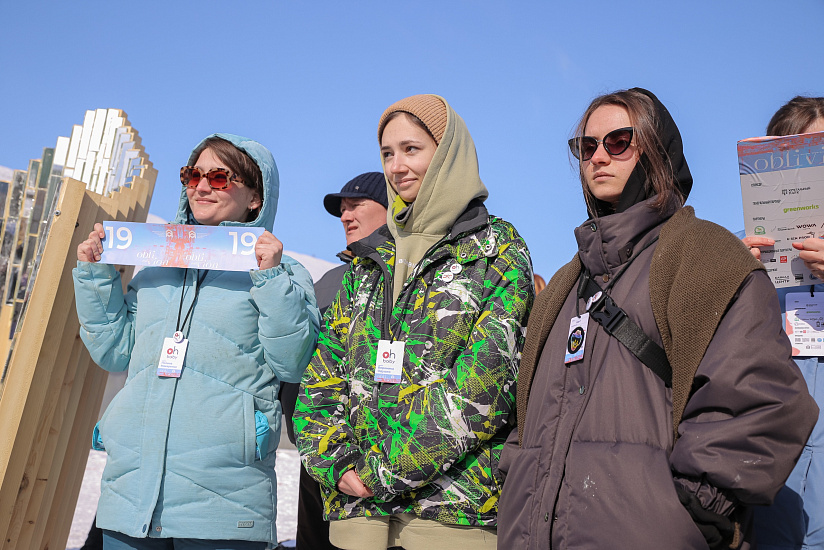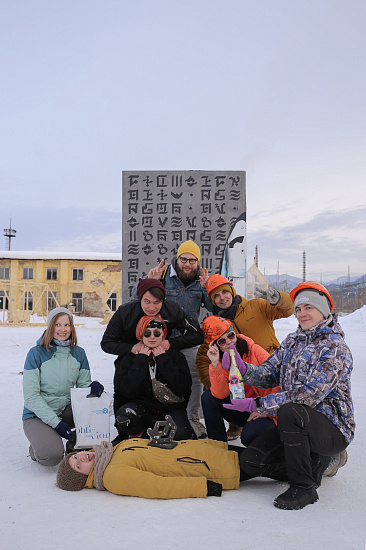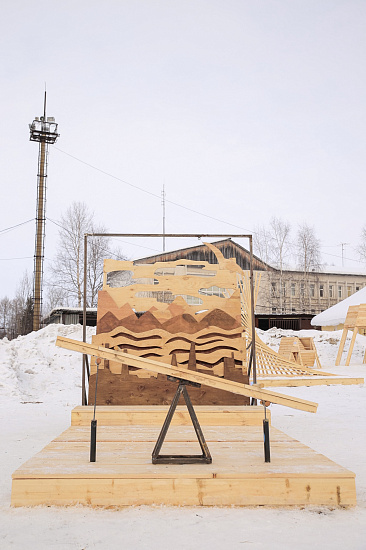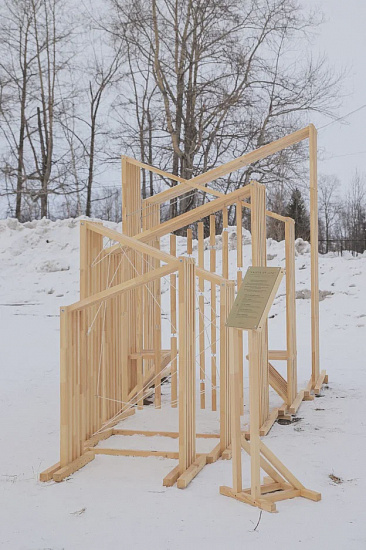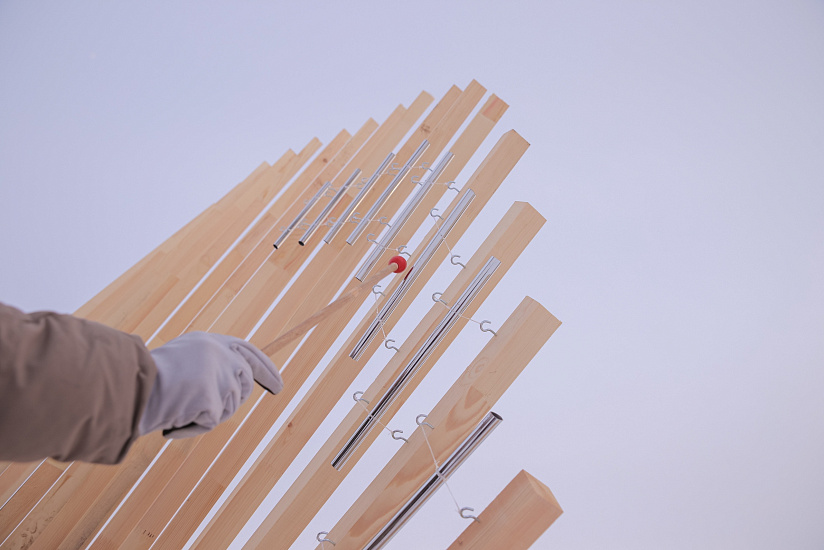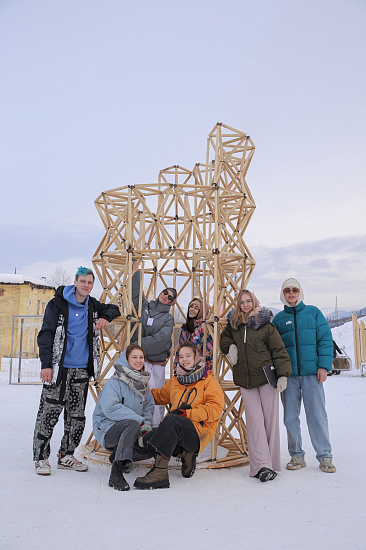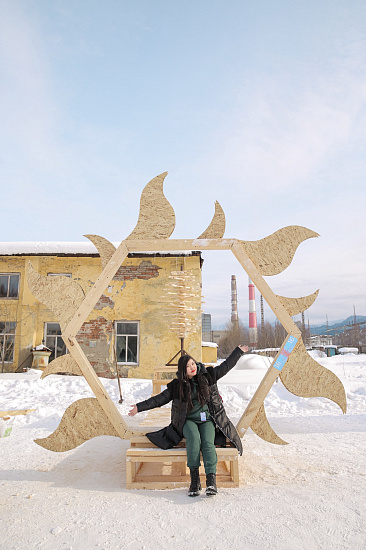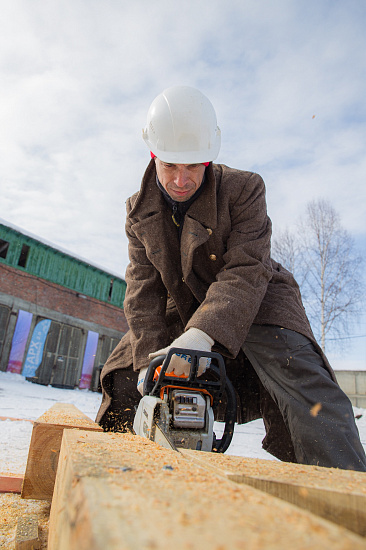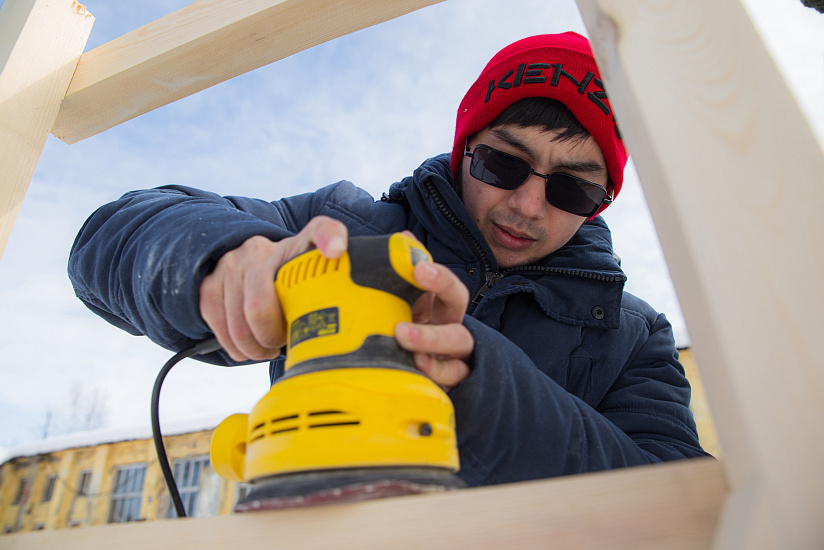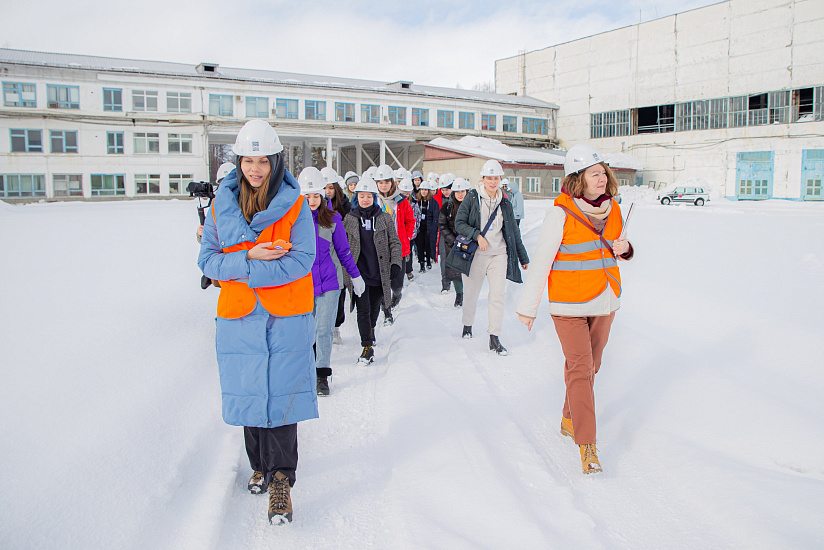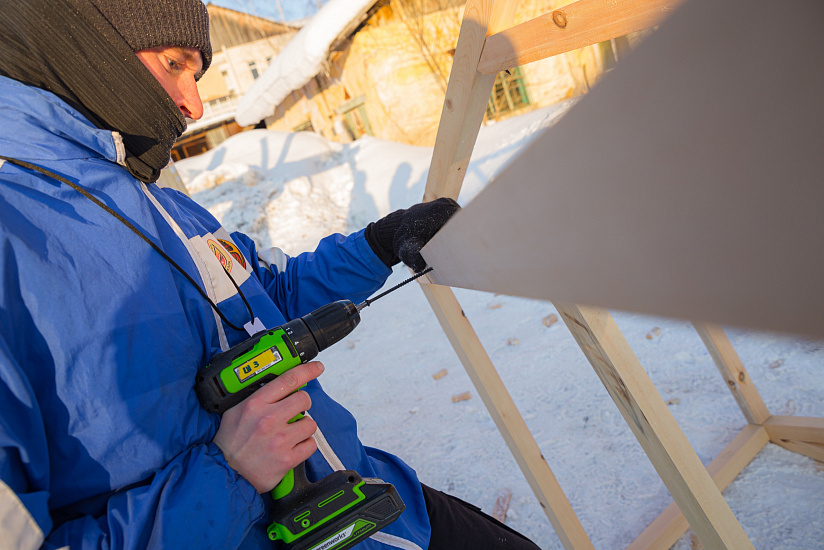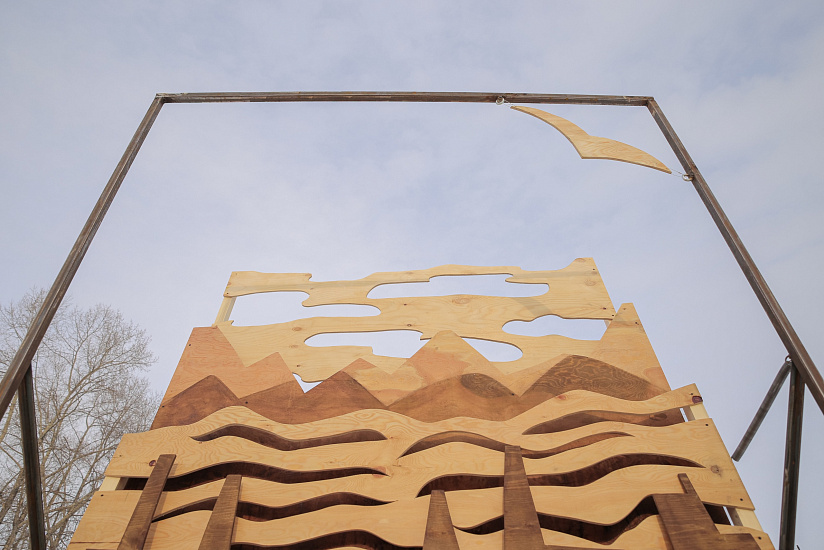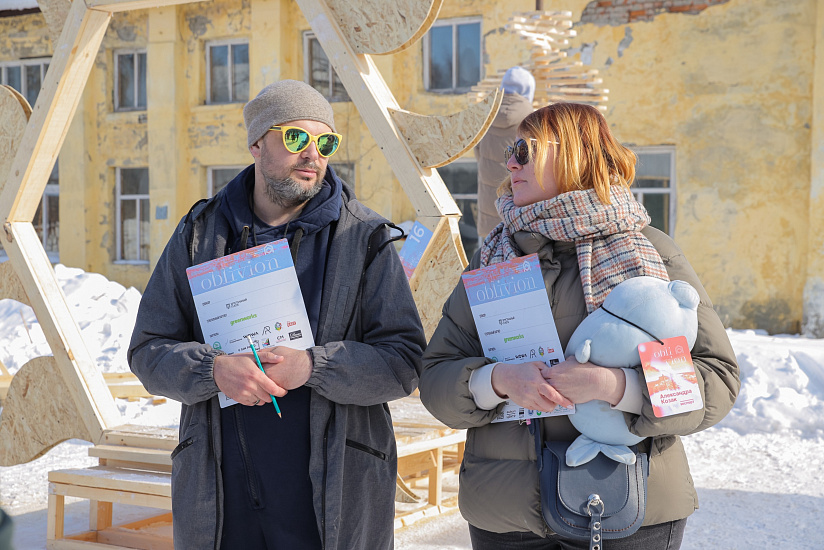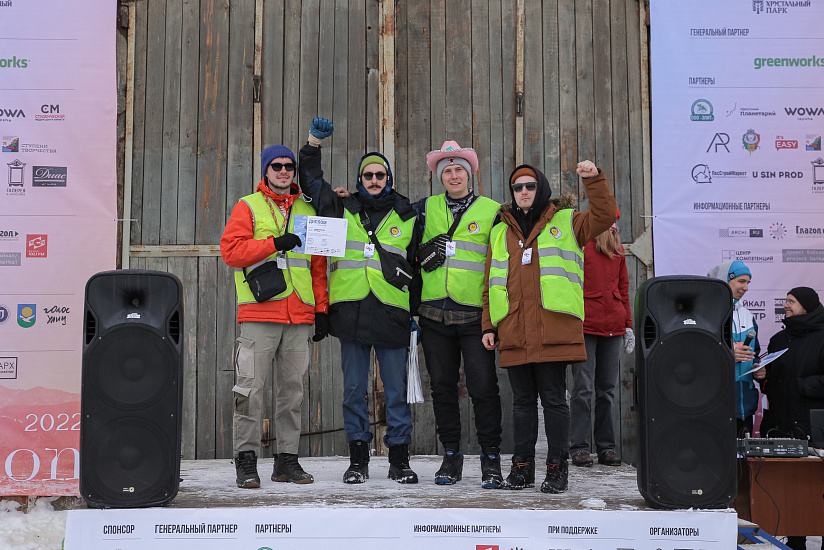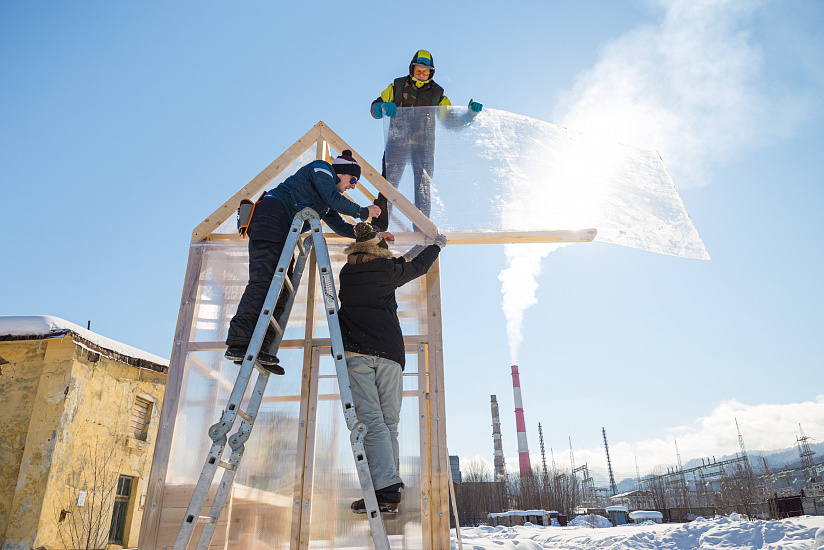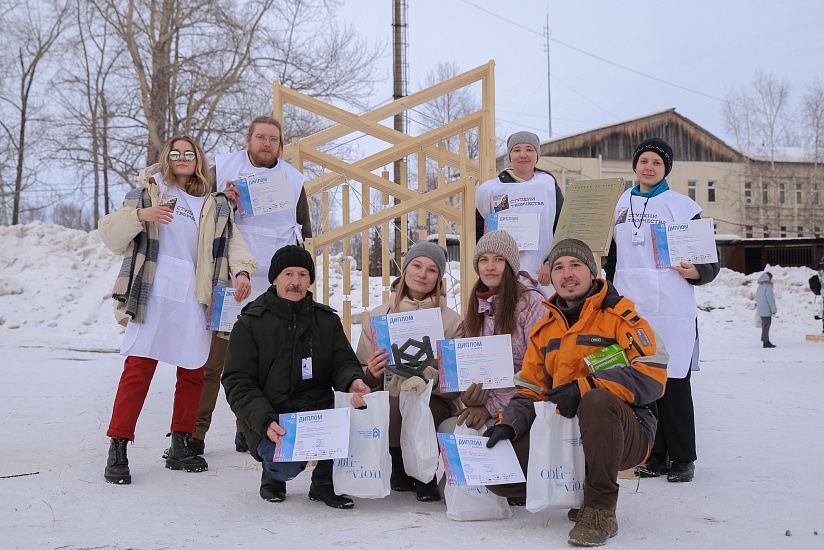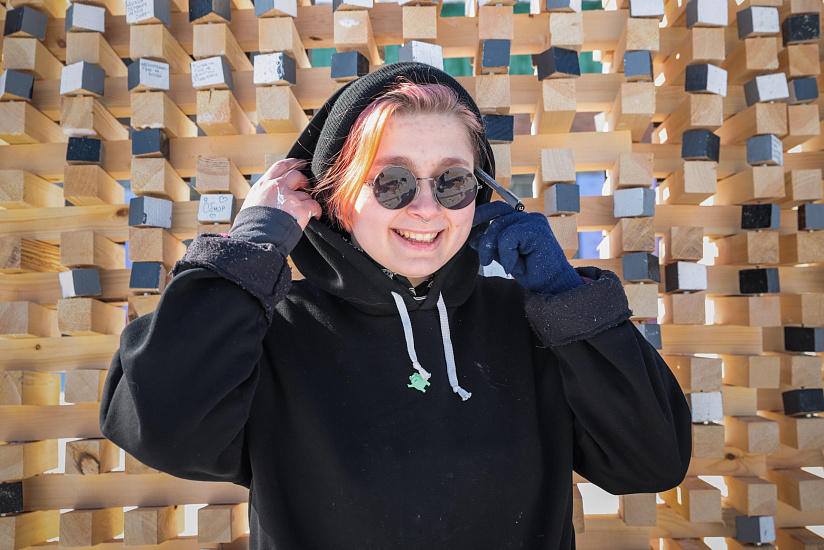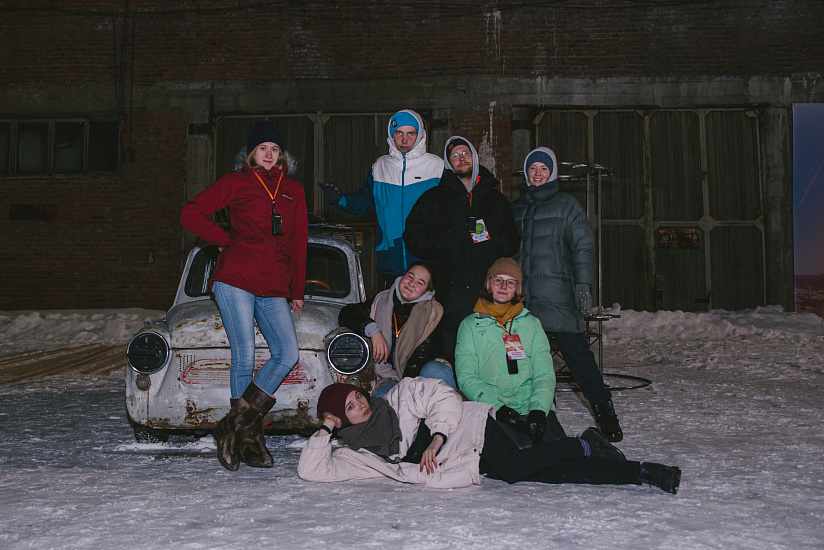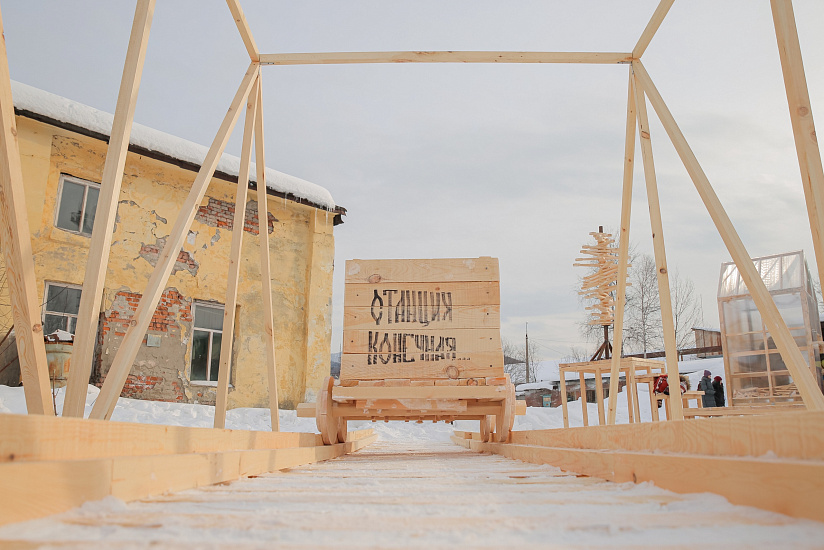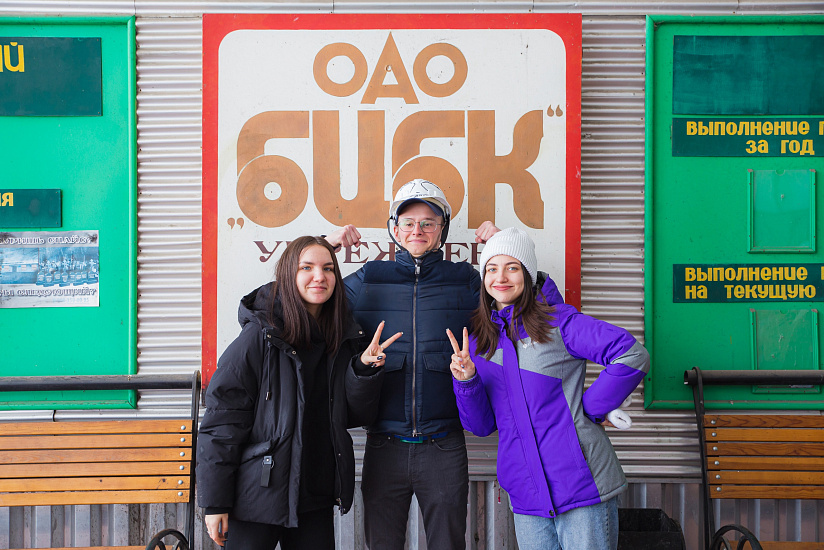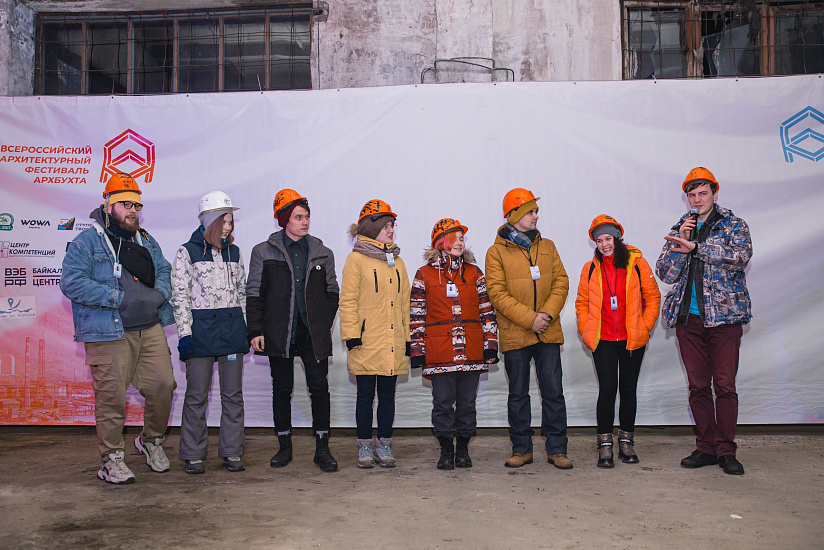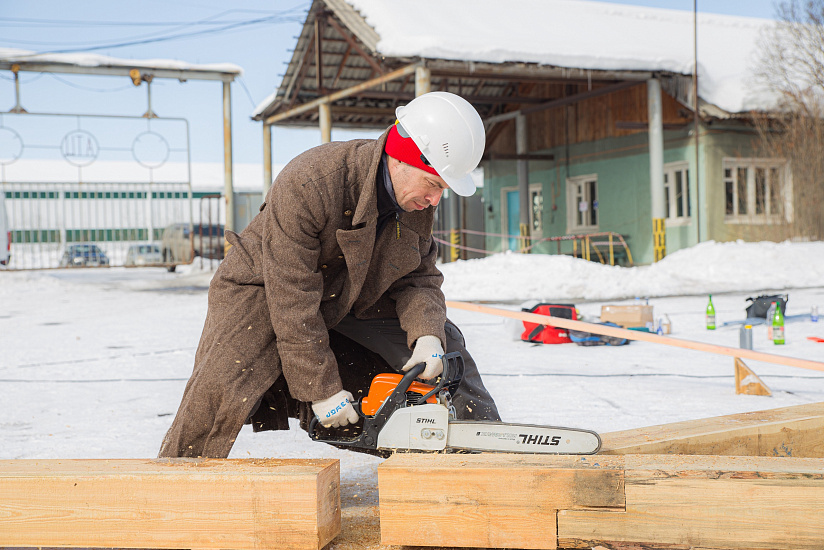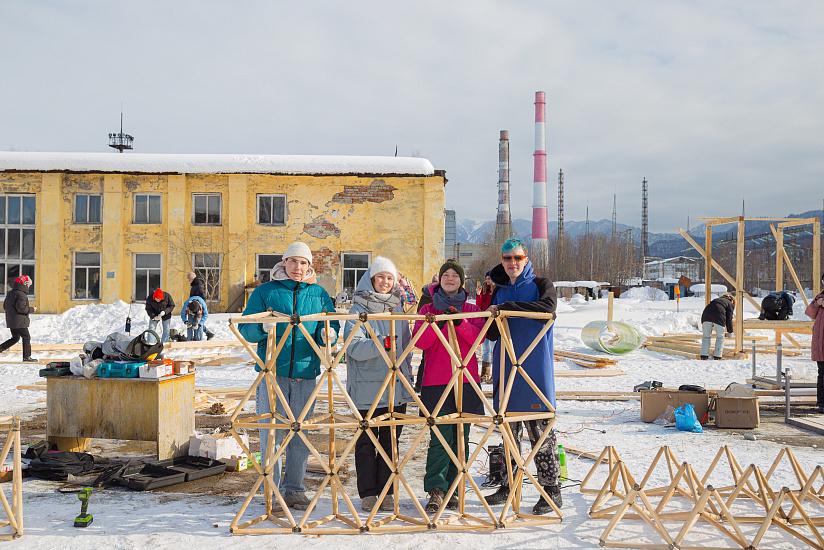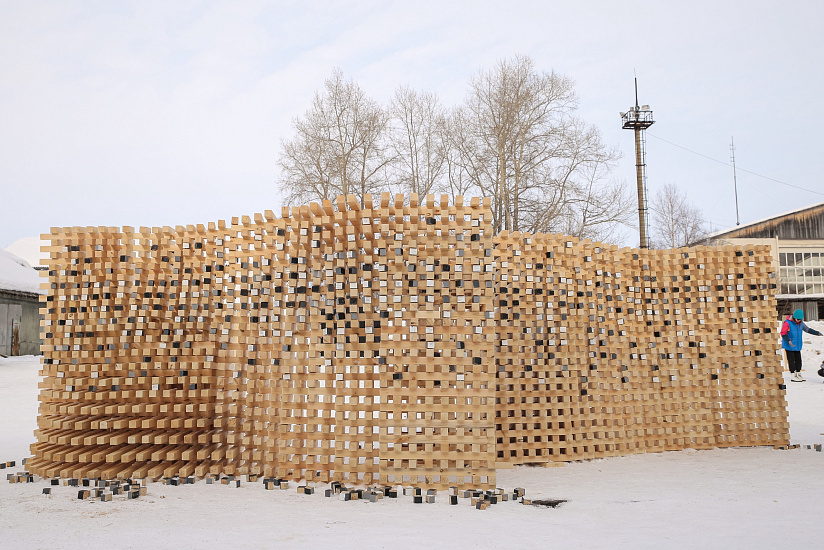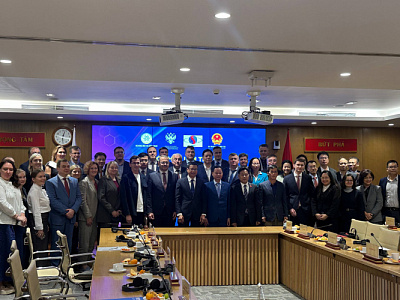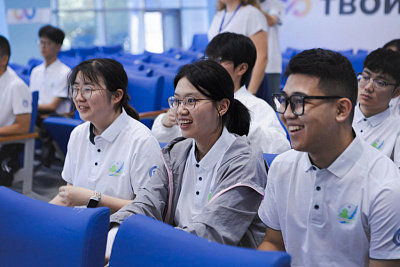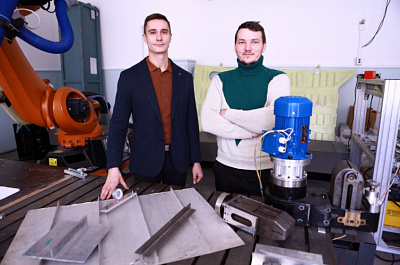The students of INRTU won The Grand Prix of "ArchBukhta. Oblivion" in Baikalsk
INRTU team "Ziggurat" won the grand prize of the XVI architectural festival "ArchBukhta. Oblivion". The authors built the art object "Monolith", which encrypts information about the history of Baikalsk and the former pulp and paper mill. The project is expected to start a quest on non-standard attractions of the town.
The festival was organized by the Young Architects Club, founded by INRTU graduates. The event took place on March 9-13 on the site of the former pulp and paper mill in Baikalsk.
According to the organizer, five-year INRTU student Olga Fomina, "ArchBukhta" united more than 130 students, practicing architects and builders from Irkutsk, Moscow, Novosibirsk and Samara. They created art objects from wood, metal, plastic and cement. The theme of the festival was Oblivion. The teams were reflecting upon the theme of rethinking of historical and cultural code of Baikalsk. The winners of ArchBuhta were chosen by experts in the field of architecture, design and creative industries. The work resulted in 20 art objects, which will probably become new points of attraction in Baikalsk.

"It was interesting for us to hold the forum at the Baikalsk Pulp and Paper Mill. The old factory site has a special atmosphere - you can feel the power of the industrial environment here. Many INRTU students participated in the festival. I am glad that from the very beginning of their studies young people show interest in independent creation of art-objects. It is useful for future architects. The festival also attracts INRTU graduates, and some of them participate in it every year," noted Olga.
According to Olga Fomina, the grand prize winners were distinguished by the spectacular presentation, technological elaboration and semantic content of the composition "Monolith".
The "Ziggurat" team is supervised by an INRTU graduate, design engineer Andrey Karsakov. He believes that "Monolith" is a fundamental element of the past, and the future is built according to it. This answer put into the idea of the art object.

"The realistic part of the art object looks like a concrete slab buried deep into the ground, but actually it is made of a cellular wooden frame, with about 200 kilograms of concrete poured into the lower levels. We did this to shift its center of gravity into the base and give it stability. The side panels of the frame were lined with plywood. The structure was decorated with the facade covering.
The virtual component of the composition was implemented in the programs Blender and Spark AR, designed to create AR masks used in the social network," said the team's captain.
The deep meaning of the installation is hidden in the faces of the slab. On one of them there is historical information about the Baikalsk Pulp and Paper Mill. The other face depicts the spaceship "Buran" - the creation of scientists from different parts of the USSR. "Buran" is a peculiar message of researchers to the descendants, "hidden behind the reality line and designed to protect them from oblivion". It is possible to get acquainted with the letter by means of a QR code leading to the AR mask for the social network by pointing it at the edge of "Monolith".
It should be noted that the team "Zikkurat" includes eight INRTU students - they are current architects, engineers, IT-specialists and present students. The creative group is united by the desire to experiment with materials, technical innovations, and the desire to bring new things to the familiar.
The jury of the festival "ArchBukhta. Oblivion" determined the top three. "Steps of Creativity" team got the first place with the art object "FACETS OF LIFE". The second place was won by EX Flex, which built "Community Greenhouse". And the third place was given to the INRTU team "Lux Aeterna", which came up with the composition "Pages of Memory".
